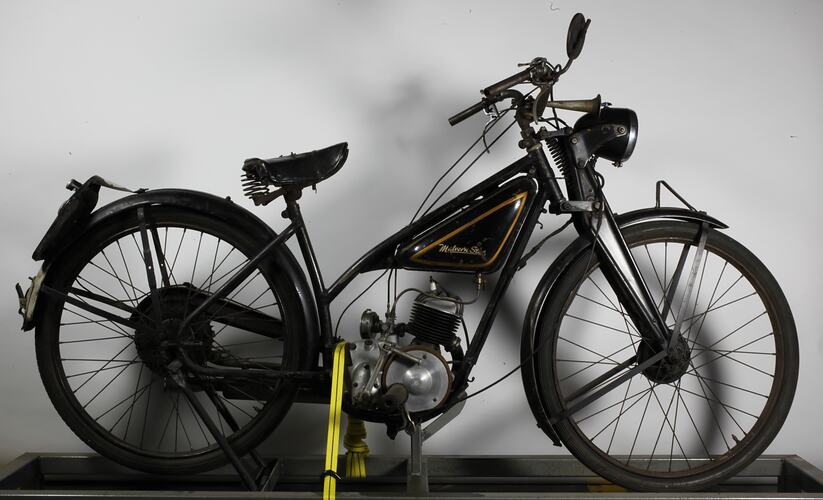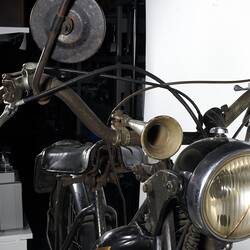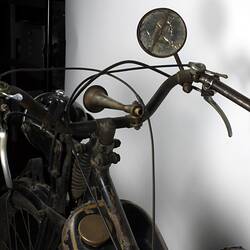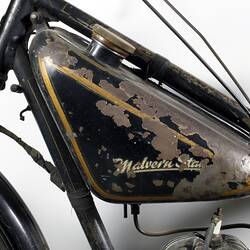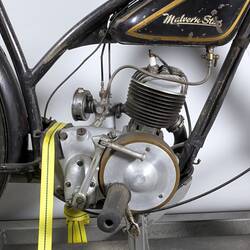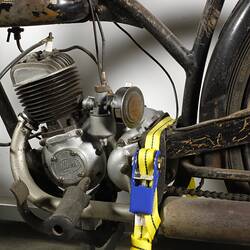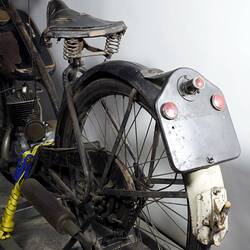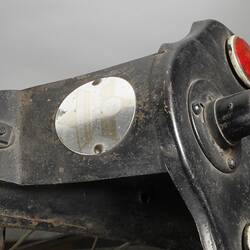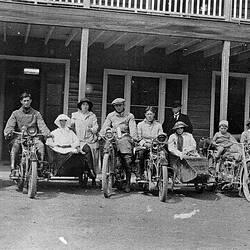Summary
This unrestored example of a Malvern Star Auto-byke was purchased by the Museum in 1985.
The Malvern Star brand was established in 1898 and was acquired by Bruce Small in 1920. Prior to this date a small number of motorcycles were produced by the company using imported British-built JAP engines. The company expanded to become Australia's leading manufacturer and assembler of bicycles by the outbreak of World War II in 1939. The Malvern Star Auto-byke was first introduced after World War II as an economical, lightweight motorised bicycle at a time when few cars were available and petrol was still rationed. Malvern Star assembled the machine in Australia using locally-made frames and a variety of imported components including a British-built 98cc single-cylinder Villers Mk. 1 Junior two-stroke engine with a two-speed gearbox. Small had obtained an exclusive Australian licence for these engines in 1945. Similar machines were made in Britain and sold in Australia under the Excelsior brand from 1937 with the same 98cc Villiers engine. Advertising for the Auto-byke promised "fun and adventure in the great outdoors".
The Museum's Malvern Star Auto-byke was built in 1952 and cost 24 Pounds when new. Previous owners include Mr Ted Manders of Pascoe Vale and a Mr Clarke in Altona. The Museum also holds an earlier Malvern Star autocycle which incorporates a 49cc French-built Mobylette engine. In the post-1945 years Malvern Star also sold a diminutive 32cc Berini cycle-motor priced at around 8 Pounds. This unit could be fitted over the front forks of any bicycle and was claimed to achieve a fuel economy figure of 240 miles per gallon. Malvern Star also acted as agents for imported Vespa, Jawa and CZ motorcycles and motor scooters which combined with the end of petrol rationing soon made the autocycle obsolete.
More Information
-
Collection Names
-
Collecting Areas
-
Acquisition Information
Purchase
-
Past Owner
Mr & Mrs Clarke, 33 Edward Avenue, Altona North, Greater Melbourne, Victoria, Australia
Mr & Mrs Clarke were the owners previous to auction. Ted Manders was also a previous owner. -
Past Owner
Mr Ted Manders, Pascoe Vale, Greater Melbourne, Victoria, Australia
Mr & Mrs Clarke were the owners previous to auction. Ted Manders was also a previous owner. -
Inscriptions
On front & rear tyres: ' T5 ', ' 26 x 2 x 1 3/4 ', ' OLYMPIC PATROL ', ' INFALTE HARD ' On frame: ' 52M / 5487 '
-
Brand Names
-
Classification
-
Category
-
Discipline
-
Type of item
-
Overall Dimensions
1900 mm (Length), 580 mm (Width), 1150 mm (Height)
-
Keywords
